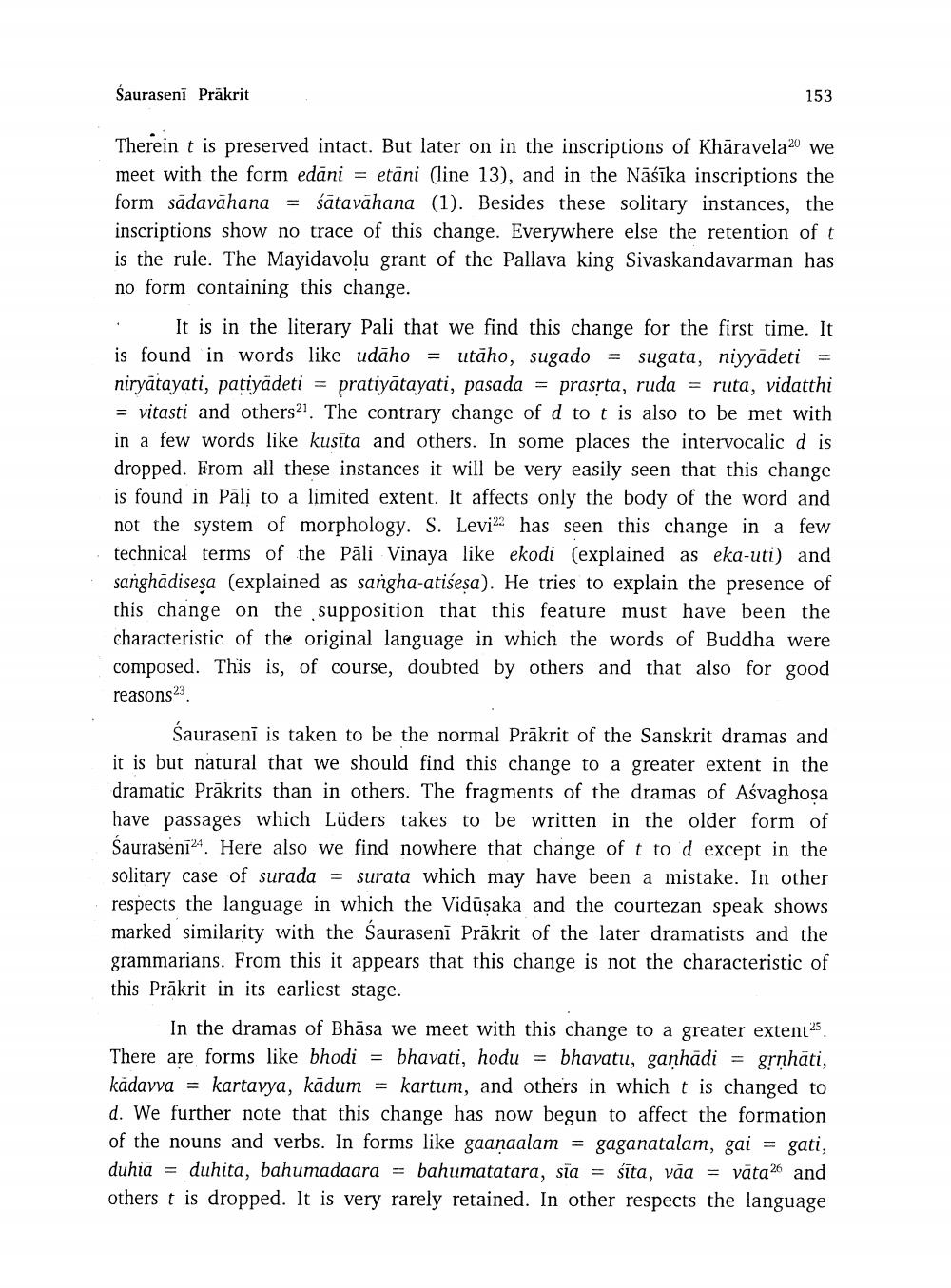________________
Sauraseni Prakrit
153
Therein t is preserved intact. But later on in the inscriptions of Khāravela20 we meet with the form edāni = etāni (line 13), and in the Našīka inscriptions the form sādavāhana = sātavāhana (1). Besides these solitary instances, the inscriptions show no trace of this change. Everywhere else the retention of t is the rule. The Mayidavolu grant of the Pallava king Sivaskandavarman has no form containing this change. • It is in the literary Pali that we find this change for the first time. It is found in words like udaho = utāho, sugado = sugata, niyyādeti = niryātayati, patiyadeti = pratiyātayati, pasada = prasrta, ruda = ruta, vidatthi = vitasti and others21. The contrary change of d to t is also to be met with in a few words like kusīta and others. In some places the intervocalic d is dropped. From all these instances it will be very easily seen that this change is found in Pāli to a limited extent. It affects only the body of the word and not the system of morphology. S. Levi22 has seen this change in a few technical terms of the Pāli Vinaya like ekodi (explained as eka-ūti) and sanghādisesa (explained as sangha-atiśesa). He tries to explain the presence of this change on the supposition that this feature must have been the characteristic of the original language in which the words of Buddha were composed. This is, of course, doubted by others and that also for good reasons23
Sauraseni is taken to be the normal Prākrit of the Sanskrit dramas and it is but natural that we should find this change to a greater extent in the dramatic Prākrits than in others. The fragments of the dramas of Aśvaghosa have passages which Lüders takes to be written in the older form of Sauraseni24. Here also we find nowhere that change of t to d except in the solitary case of surada = surata which may have been a mistake. In other respects the language in which the vidūsaka and the courtezan speak shows marked similarity with the Sauraseni Prākrit of the later dramatists and the grammarians. From this it appears that this change is not the characteristic of this Prākrit in its earliest stage.
In the dramas of Bhāsa we meet with this change to a greater extenta. There are forms like bhodi = bhavati, hodu = bhavatu, ganhādi = grnhāti, kädavva = kartavya, kādum = kartum, and others in which t is changed to d. We further note that this change has now begun to affect the formation of the nouns and verbs. In forms like gaanaalam = gaganatalam, gai = gati, duhiä = duhitā, bahumadaara = bahumatatara, sia = śīta, vāa = vāta26 and others t is dropped. It is very rarely retained. In other respects the language




